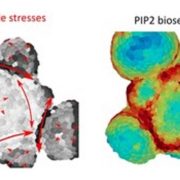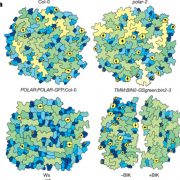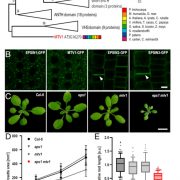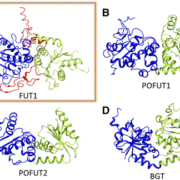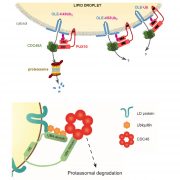Update. Inroads into Internalization: Five Years of Endocytic Exploration
By
Introduction
 The plasma membrane (PM) serves as the interface between the cell and its environment. Accordingly, cells have the capacity to modulate their complement of PM-associated receptors, transporters, channels, lipids, and other membrane components in order to modulate numerous physiological functions including synthesis of the extracellular matrix, intercellular communication, nutrient uptake, environmental sensing, and directional growth, among others. Exocytosis/Secretion which delivers newly synthesized and recycled cargo from the trans-Golgi network (TGN) and endosomes to the PM, and endocytosis wherein PM cargo is internalized and sorted into early endosomes (EE), are the two complimentary trafficking pathways chiefly responsible for the maintenance of PM composition. Much of our understanding of these processes derives from work in yeast and mammalian systems; indeed, only recently has endocytosis been conclusively demonstrated in plants (reviewed in (Robinson et al., 2008)). This review summarizes recent progress that has enhanced our understanding of the mechanisms of internalization of proteins and lipid from the PM; other reviews of earlier work in the field, including the following, are highly recommended for a thorough investigation of the subject: (Robinson et al., 2008; Chen et al., 2011; Baisa et al., 2013; Fan et al., 2015; Paez Valencia et al., 2016).
The plasma membrane (PM) serves as the interface between the cell and its environment. Accordingly, cells have the capacity to modulate their complement of PM-associated receptors, transporters, channels, lipids, and other membrane components in order to modulate numerous physiological functions including synthesis of the extracellular matrix, intercellular communication, nutrient uptake, environmental sensing, and directional growth, among others. Exocytosis/Secretion which delivers newly synthesized and recycled cargo from the trans-Golgi network (TGN) and endosomes to the PM, and endocytosis wherein PM cargo is internalized and sorted into early endosomes (EE), are the two complimentary trafficking pathways chiefly responsible for the maintenance of PM composition. Much of our understanding of these processes derives from work in yeast and mammalian systems; indeed, only recently has endocytosis been conclusively demonstrated in plants (reviewed in (Robinson et al., 2008)). This review summarizes recent progress that has enhanced our understanding of the mechanisms of internalization of proteins and lipid from the PM; other reviews of earlier work in the field, including the following, are highly recommended for a thorough investigation of the subject: (Robinson et al., 2008; Chen et al., 2011; Baisa et al., 2013; Fan et al., 2015; Paez Valencia et al., 2016).


